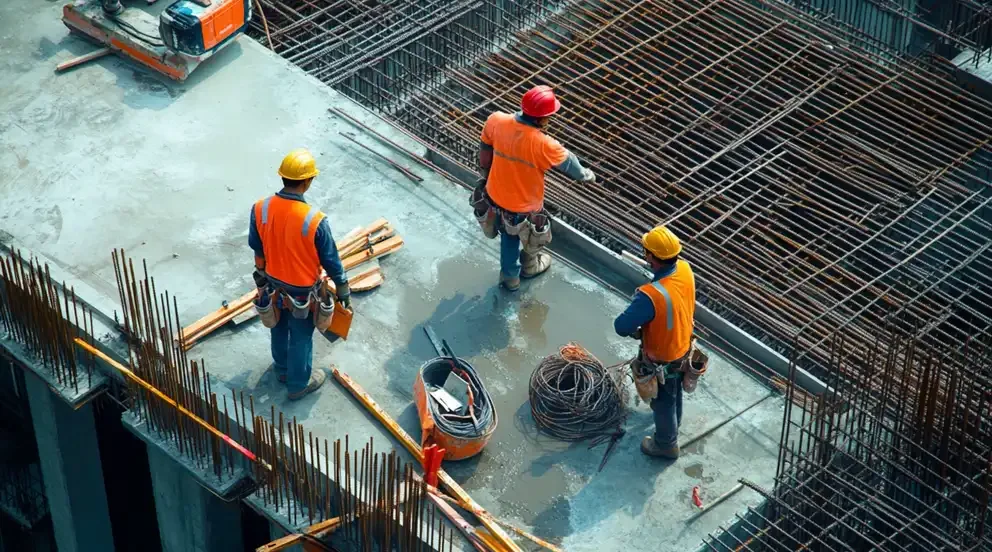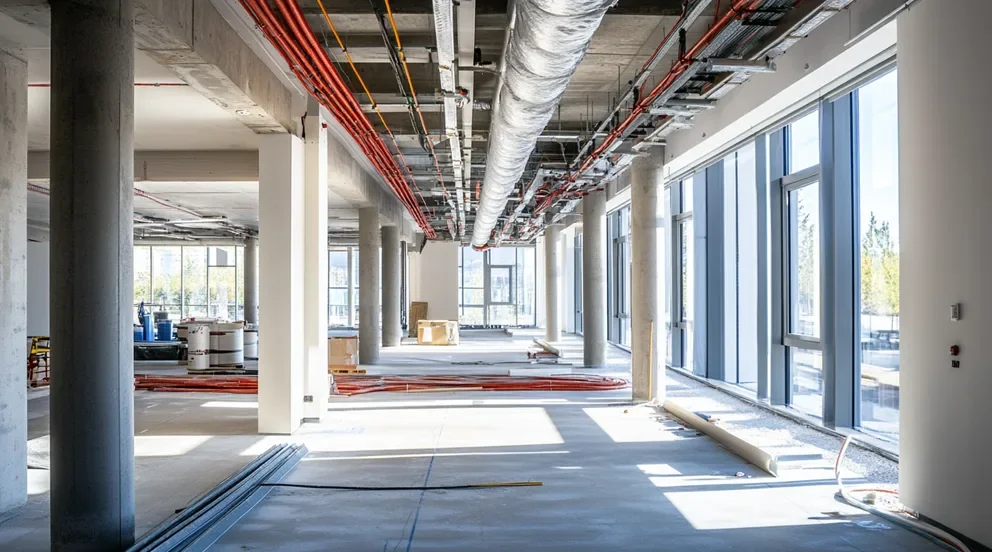HVAC Maintenance Guide refers to the regular check-ups, cleaning, and servicing of heating, ventilation, and air conditioning systems. These complex networks are vital for creating comfortable indoor environments by regulating temperature and air quality. A comprehensive maintenance routine is essential to prevent sudden breakdowns, extend equipment life, and ensure systems run efficiently.
A well-crafted HVAC Maintenance Guide serves as an essential roadmap for homeowners, facility managers, or maintenance technicians. It outlines the necessary steps and best practices for inspecting and upkeeping each component of the HVAC system, including filters, coils, and ducts. The guide aims to help individuals undertake preventive maintenance, thus reducing the likelihood of costly repairs.
These guides often incorporate seasonal checklists, troubleshooting tips, and safety precautions. They ensure that all aspects of the systems, from thermostats to blowers, operate optimally. By following a detailed HVAC Maintenance Guide, users can achieve significant energy savings, improved system performance, and enhanced indoor air quality, all while safeguarding against premature equipment failure.
Welcome to the ultimate guide to HVAC maintenance, your key to unlocking comfort and efficiency in your home or business. As the seasons shift and temperatures fluctuate, the performance of your HVAC system becomes critical. Timely maintenance ensures that your living or working space remains a haven throughout the year, regardless of the weather outside.
In this article, we delve deep into the importance of regular HVAC care. Discover how simple preventative measures can ward off unexpected malfunctions, preserve your system’s longevity, and have profound effects on both your well-being and wallet. Maintenance isn’t just a routine; it’s an investment in consistent, reliable comfort.
Join us as we unpack the practical steps detailed in our comprehensive HVAC Maintenance Guide. We aim to empower you with knowledge, from basic upkeep to sophisticated checks, to foster a healthy, energy-efficient environment. Whether you’re a savvy homeowner or an experienced facility manager, mastering HVAC maintenance is your ticket to eternal indoor tranquility.
Introduction to HVAC Maintenance
Effective maintenance of HVAC systems is paramount for sustaining a comfortable indoor climate. These systems play a crucial role in filtering air, maintaining humidity levels, and keeping temperatures stable. Without proper care, systems can become inefficient, leading to increased energy consumption and reduced air quality. Preventive maintenance not only safeguards the internal components from excessive wear but also aids in identifying potential issues before they escalate into significant problems. Consequently, a well-maintained HVAC unit operates competently, reducing operational costs and prolonging its service life.
To comprehend the essence of HVAC maintenance, one must acknowledge the complexity of these systems. Comprising numerous mechanical and electrical parts, an HVAC system works cohesively to regulate air flow. Neglect in any single component can result in a chain reaction of malfunctions. For example, a dirty filter can impede airflow, overworking the system to maintain desired temperatures. Understanding the interdependence of these components highlights the importance of regular check-ups to ensure harmonious operation throughout the year.
Regular inspections and tune-ups are critical parts of a maintenance regimen. These not only enhance efficiency but also ensure safety. Skilled technicians will inspect the system for signs of wear, replace filters, clean ducts, and confirm that electrical connections are secure. This proactive approach can prevent hazardous situations such as electrical fires or carbon monoxide leaks. Keeping HVAC systems in impeccable condition is thus not merely about comfort, but also about the safety of occupants.
Scheduling professional maintenance should coincide with seasonal changes, as the system prepares to handle different climate demands. Spring and fall are typically ideal for these check-ups, ensuring that the system is clean and functional for the extreme temperatures of summer and winter. Timed correctly, these scheduled services can help mitigate the risk of untimely breakdowns during peak usage.
In conclusion, regular HVAC maintenance is a small investment that yields significant returns. Homeowners and building managers must prioritize this aspect to enhance the longevity and performance of their systems. Not only does it ensure a comfortable and healthy environment, it also contributes to sustainable energy use and cost savings over time. Remember, a well-maintained HVAC system is a foundation for a comfortable and safe living space.
Understanding the Components of Your HVAC System
The HVAC system is a critical feature in modern structures, diligently working to provide comfort throughout the seasons. Its primary components include the thermostat, which commands the system; the furnace that produces heat; the air conditioner that cools; the ductwork that channels air; and the vents where air is expelled. Grasping the function of each part is vital for both maintenance purposes and when troubleshooting issues within the system. Knowledge of these components can assist homeowners in identifying early signs of malfunction and taking appropriate preventative measures.
The thermostat serves as the brain of your HVAC system. It allows you to set the desired temperature and regulates the operation of heating and cooling units based on the setting. Variations in thermostat technology range from basic manual models to sophisticated programmable options that can optimize energy consumption. Meanwhile, the furnace, often powered by gas, oil, or electricity, generates warm air. The heat exchanger within the furnace is an essential safety feature, preventing combustion gases from mixing with the circulated air.
In contrast, the air conditioner, typically situated outside the building, transfers heat from the indoors to the outdoors, lowering the internal temperature. This unit utilizes refrigerant, compressors, and evaporators to chill and dehumidify the air. The seamless performance of both heating and cooling units relies heavily on the ductwork, a network of tunnels that distribute conditioned air throughout the premises. Leaks or blockages within ducts can severely hamper system efficiency, necessitating regular inspections to maintain optimal airflow. HVAC Maintenance Guide
The discharge of air into individual rooms occurs through a series of vents or registers. An even distribution of air is crucial for maintaining consistent temperatures across different areas. It is recommended that homeowners keep these outlets unobstructed to prevent strain on the HVAC system. Also, filters located in the air path require regular cleaning or replacement to maintain air quality and system longevity.
Understanding your HVAC components is indispensable for ensuring their seamless operation and service life. Regular checkups and maintenance of these parts preserve indoor comfort and can ward off costly replacements. As a homeowner, familiarizing yourself with the basic functions and care of these components is a proactive step towards managing your climate control investments wisely.
Benefits of Regular HVAC Maintenance
Regular HVAC maintenance confers a multitude of advantages, each contributing to the overarching goal of maximizing system efficiency and comfort within a living space. First and foremost, maintenance ensures that HVAC units operate at peak performance. By routinely replacing filters and ensuring that all system components are in optimal condition, the system requires less energy to heat or cool the home. Consequently, this leads to lower utility bills, giving homeowners noticeable savings over time. Additionally, well-maintained systems distribute the air more evenly, eliminating hot or cold spots and facilitating a consistently comfortable environment.
Proactive care of HVAC units significantly extends their operating life. Just as vehicles require regular servicing to prevent engine wear, HVAC systems benefit from periodic tune-ups to avoid the mechanical strain that can lead to premature failure. By addressing minor issues before they progress into major system faults, homeowners can delay the substantial cost associated with system replacement. Furthermore, maintenance can expose any parts that are near the end of their service life, allowing replacements to be planned and budgeted accordingly.
Another benefit lies in the domain of air quality. Air circulation is integral to HVAC function, and maintenance tasks like cleaning ducts and filters directly impact the purity of indoor air. When filters accumulate dust and debris, they can no longer effectively trap pollutants, allowing allergens and irritants to proliferate within the dwelling. Regular maintenance ensures these filters are clean, which is particularly beneficial for residents with allergies or respiratory issues. The promotion of cleaner air contributes to a healthier living space.
Maintenance also upholds the warranty of your HVAC system. Manufacturers often stipulate regular professional servicing as a warranty requirement. In the event of a system malfunction, proof of periodic maintenance can be crucial for warranty claims. This can save substantial expenses in the long run, ensuring that the protections offered by the warranty are fully utilized. HVAC Maintenance Guide
In conclusion, the benefits of regular HVAC maintenance cannot be overstated. It not only keeps systems running efficiently, saving money and extending their longevity but also maintains indoor air quality and warranty protection. As a cornerstone of property care, the importance of consistent HVAC maintenance is clear: it is a simple practice that offers peace of mind and significant returns on the investment.
Scheduling Routine HVAC Checkups
Scheduling routine HVAC checkups is a preventative strategy essential for the long-term health of the system. Organizing these appointments strategically can minimize potential disruptions and ensure that the unit runs smoothly when demand is highest. As general guidance, scheduling these inspections in the spring and fall can prepare the system for the extreme temperature demands of summer and winter. This timing allows for any necessary repairs or parts replacements to be completed before the system is needed to work overtime during seasonal peaks.
The process of scheduling an HVAC checkup should be straightforward and considerate of the homeowner’s timetable. Many service providers offer flexible booking options to accommodate busy schedules. During these checkups, trained professionals conduct an exhaustive examination of the system. They assess the condition of key components, optimize settings, and provide any necessary maintenance. This attention to detail can unveil hidden issues that, if left unresolved, could translate into costly damages.
Regular checkups often include cleaning or replacing air filters, inspecting and tightening electrical connections, lubricating moving parts, and checking the system’s refrigerant levels. Each of these actions plays a role in ensuring that the HVAC system functions as intended, without undue strain that could lead to energy waste or increased wear and tear. Technicians also test the system’s controls and thermostat settings to verify accurate temperature regulation and cycling.
Besides the technical aspects, routine checkups offer homeowners a chance to discuss any concerns or queries with their HVAC professional. This dialogue can be invaluable, providing insights into improving system efficiency, potential upgrades, or understanding new features that could enhance home comfort. Homeowners can also learn about newer, more energy-efficient models should a system replacement appear imminent on the horizon. HVAC Maintenance Guide
To encapsulate, the advantages of regularly scheduled HVAC checkups are irrefutable. They ensure that your system is reliable, efficient, and poised to deliver optimal performance. By proactively maintaining the HVAC unit, homeowners can sidestep unforeseen breakdowns and the stress that accompanies such events. In essence, diligent scheduling of maintenance is a cornerstone in the smooth, uninterrupted functioning of any HVAC system.
DIY HVAC Maintenance Tips for Homeowners
Homeowners can undertake several DIY HVAC maintenance tasks to enhance their system’s effectiveness and longevity. These simple yet impactful measures can help maintain a well-functioning system in between the scheduled professional services. Before performing any maintenance, however, ensure that the system is turned off to avoid any potential safety hazards. This practice is paramount and should never be overlooked when handling HVAC maintenance.
A primary step is regularly replacing or cleaning the air filters. Dirty filters restrict air flow, causing the system to expend more energy and work harder to maintain the desired temperature. This straightforward task can be done every few months and is crucial for efficient system performance. Homeowners should also ensure that the area around outdoor units is clear of debris, such as leaves or branches, which could obstruct air flow and strain the system.
Ensuring that vents and registers within the home are not blocked by furniture, rugs, or curtains is another simple maintenance step. This ensures that air can circulate freely, maintaining consistent temperatures throughout the home. In addition, periodically vacuuming these vents can prevent the build-up of dust and debris that could impede air flow or degrade air quality. Keeping these pathways clear is a straightforward means to uphold system efficiency. HVAC Maintenance Guide
Inspecting the insulation and sealing of ductwork can also be beneficial. Gaps or leaks in the ducts can lead to significant energy losses. While major ductwork repairs should be handled by professionals, homeowners can use duct tape or mastic to seal small leaks. Enhancing the overall insulation of the home, such as sealing windows and doors, can also reduce the workload on the HVAC system and improve energy efficiency.
Furthermore, understanding when to call in a professional is also a key aspect of DIY maintenance. Homeowners should be attentive to unusual noises, smells, or inconsistent performance, which could signal deeper issues. If the system exhibits such symptoms, it is advisable to contact a professional to diagnose and resolve these issues promptly. HVAC Maintenance Guide



